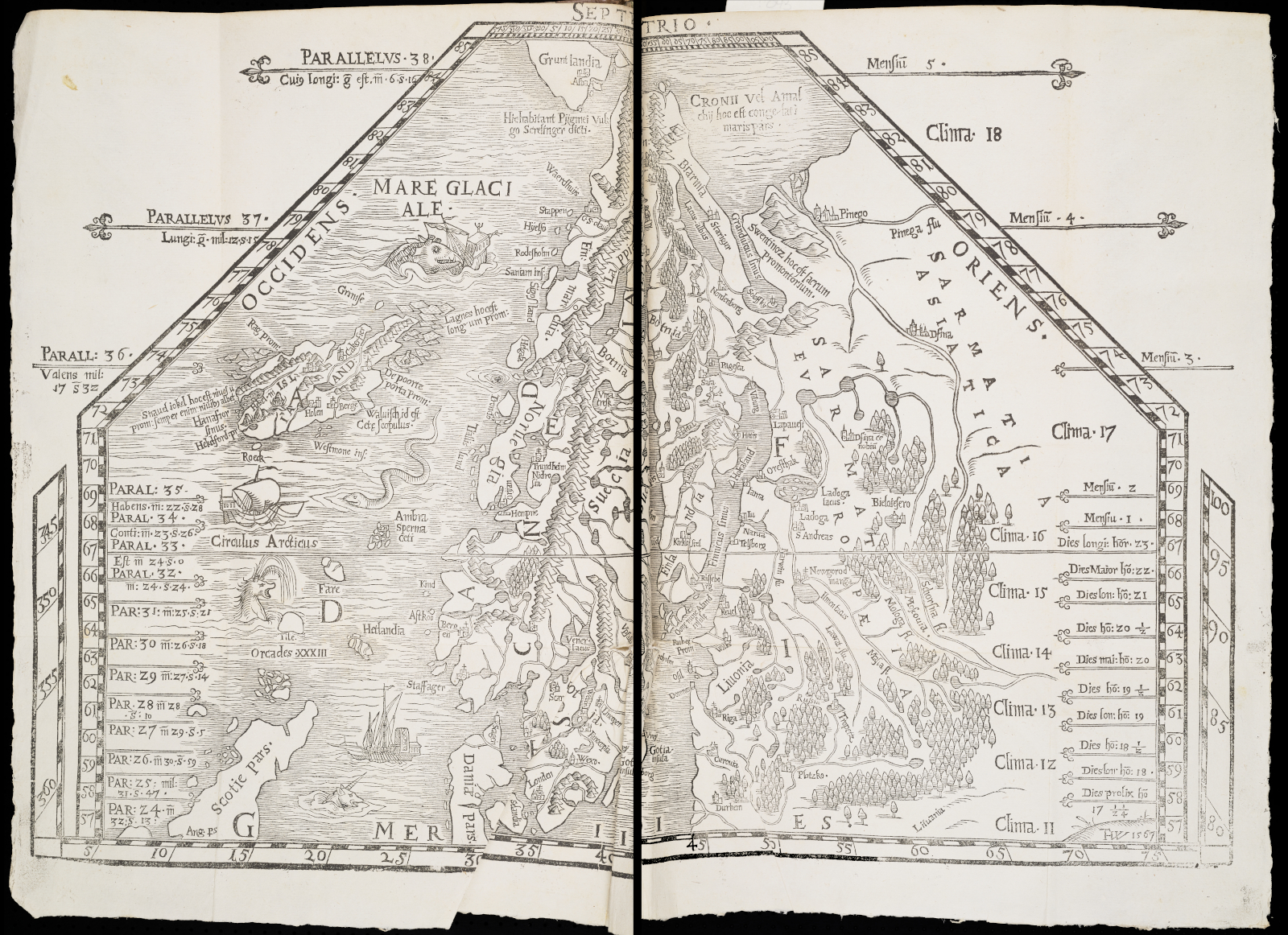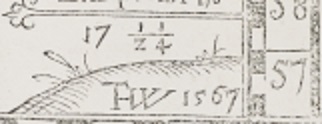In my previous post, I mentioned that the Library has a 1567 Latin edition of Olaus Magnus’ Historia Olai Magni Gothi archiepi scopi vpsalensis, de gentium septentrionalium (History of the Northern Peoples). It contains a simplified woodcut of his famous Carta Marina map. Unfortunately, I was not able to show a photograph of it due to its condition and the difficulty of photographing it.
Thanks to the efforts of Brock Switzer, cultural heritage photographer, and Emilie Duncan, paper conservator, I can now share an image of the 1567 edition of the Carta Marina.
The technical challenges
In order to understand the challenges of photographing the map, it is necessary to describe how it is inserted in the book. According to Emilie, “the map is glued along the central vertical fold to a paper strip called a “stub” or “guard.” The other side of the stub is sewn into the book structure as if it were just another page.” In the case of our edition, she goes on to explain, the stub is too short, which hides the center portion of the map in the gutter area.
If you look closely at the map, you will note that there is a void vertically along the center. It is particularly noticeable at the top edge of the map. To the left of the void are the letters “SEPT” and to the right are the letters “TRIO”. If you were able to see the entire map, those letter strings would spell out the word SEPTENTRIO.
The fact that the map is folded both vertically and horizontally into the book presents another challenge to the photographer. Unfolding the map without damaging it and getting in plane (i.e. flat) was no small feat. Hats off to Brock and Emilie for the care with which they unfolded the map. Staff and patrons alike can now access the map without having to handle the original.

Wrapping up
While the 1567 edition of the Carta Marina does not have the number and variety of sea monsters as the earlier editions, it does show several sea monsters off the west coast of Scandinavia and in the waters around Iceland.
Adam Henricpetri published the museum’s 1567 Latin edition of the History of The Northern Peoples in Basel, Switzerland. Scholars initially attributed the woodcut of the Carta Marina to Fickler Weylensis, who translated Magnus’s work into German, basing the attribution on a misreading of the initials in the lower right corner. More recently, map historians have determined that the initials “TFW” are associated with the woodcut artist Thomas Weber.

I hope you’ve enjoyed a deeper look at the Carta Marina. I’ve certainly enjoyed researching it.